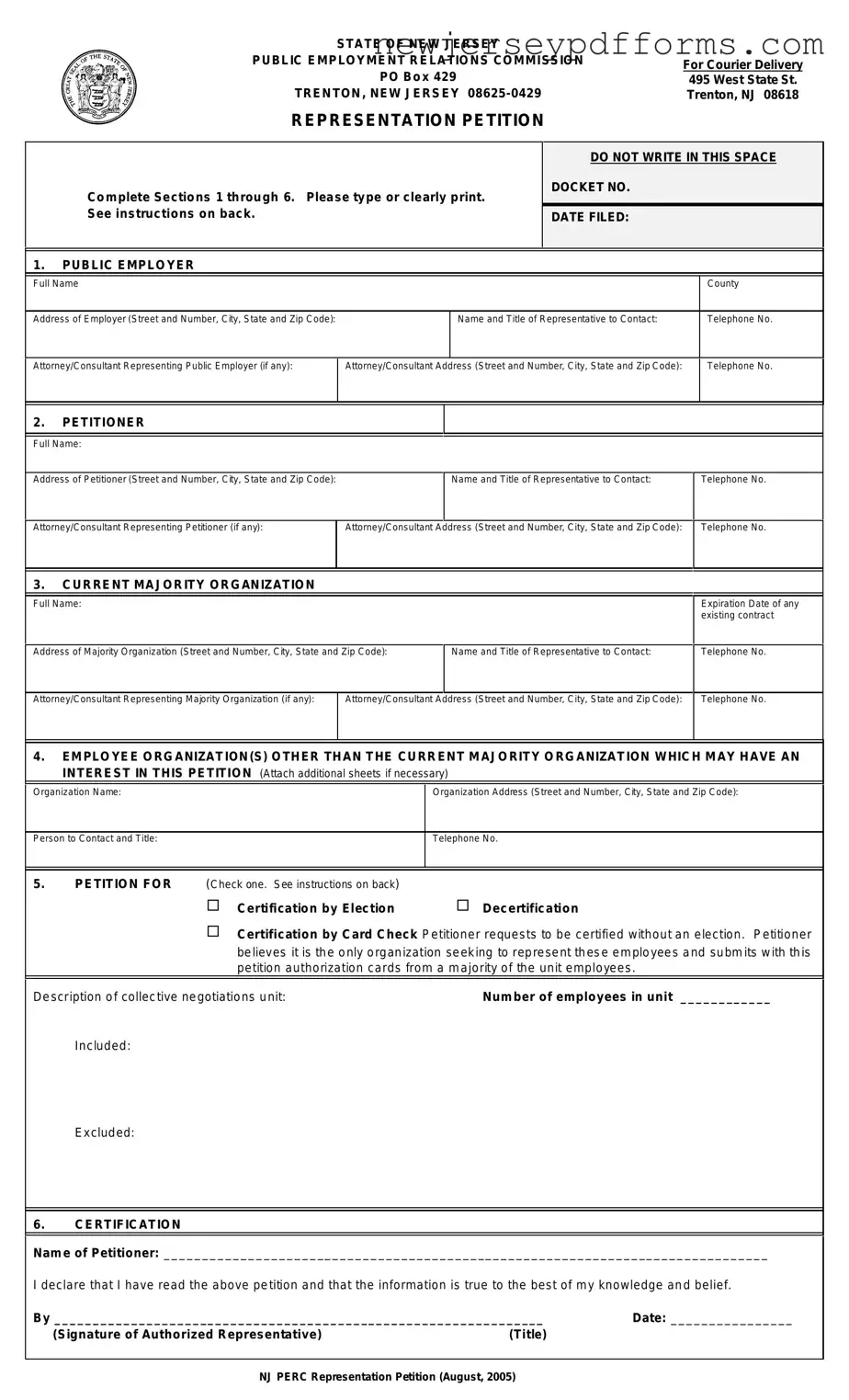What is the New Jersey Representation Petition form?
The New Jersey Representation Petition form is a legal document used to request certification or decertification of a majority representative for public employees in New Jersey. It is filed with the Public Employment Relations Commission (PERC) and allows public employers, employees, or their representatives to seek recognition for collective negotiations.
Who can file a Representation Petition?
A Representation Petition can be filed by a public employer, a public employee, or a group of public employees. Additionally, any individual or employee organization acting on behalf of public employees is eligible to submit this petition.
What types of petitions can be filed using this form?
The form allows for several types of petitions, including requests for certification by election, decertification of a current representative, or certification by card check. Each option has specific requirements and conditions that must be met, as outlined in the instructions accompanying the form.
What information is required on the form?
The form requires detailed information about the public employer, the petitioner, and any current majority organization. This includes names, addresses, contact information, and details regarding the collective negotiations unit. It is crucial to complete all sections accurately to avoid delays in processing.
How do I demonstrate a showing of interest?
A showing of interest is typically demonstrated by submitting authorization cards signed by at least 30% of the employees in the negotiations unit. These cards must be original, signed, and dated within six months of filing the petition. For certification by card check, the cards must specifically name the organization seeking certification.
When should I file a Representation Petition?
Timely filing of a Representation Petition is crucial. Petitions can only be filed during designated periods as specified in New Jersey Administrative Code (N.J.A.C. 19:11-2.8). Ensure that your petition is completed and submitted within these timeframes to avoid complications.
How do I submit the Representation Petition?
To submit the petition, type or clearly print all required information. If additional space is needed, attach extra sheets. The completed petition must be signed and submitted in its original form along with four copies and the necessary showing of interest. Mail submissions should go to the Director of Representation at PERC's PO Box, while courier deliveries should be directed to the specified street address in Trenton, NJ.
What happens after I file the petition?
Once the petition is filed, the Director of Representation will review it for completeness and compliance with legal requirements. If everything is in order, the petition will be processed, and further instructions will be provided regarding the next steps, which may include scheduling an election or additional hearings.
